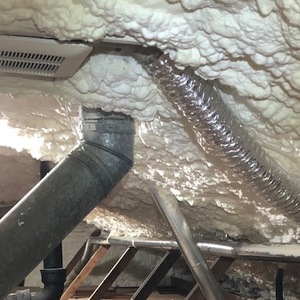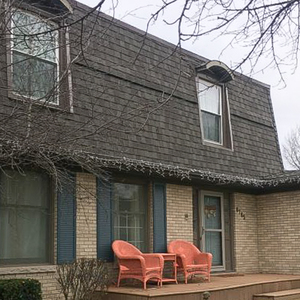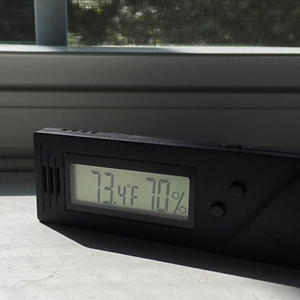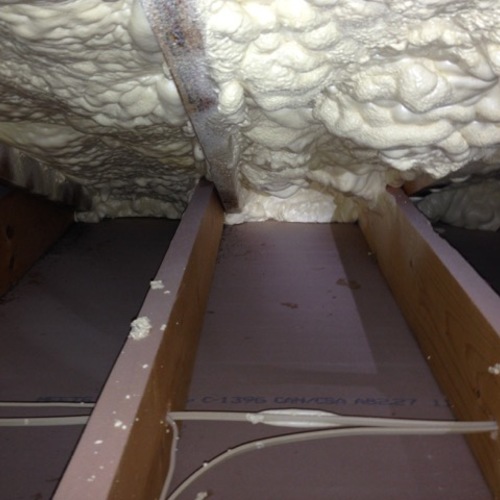
Jason Advani thought he was on the right track when he insulated the bottom of the roof deck in his walk-up attic with closed-cell spray foam. As planned, the R-40 worth of insulation has drastically reduced his heating bill, but now he faces another, unexpected problem.
“Since then, the space has been plagued with very high humidity,” he writes in a Q&A post. “It’s at 60% to 70%, maybe higher. I’m forced to run a dehumidifier up there. I’m spending more money on running the dehumidifier year-round than I previously was to heat the house!”
With outside temperatures ranging between -5°F and 95°F, attic temperatures range between 48°F and 92°F. Only about 10% of the hip roof is shaded, so it gets plenty of direct sunlight.
Advani hopes to finish the attic and install a minisplit, although he’s not sure that will lower the humidity.
Most of the house is heated and cooled with a conventional gas-fired furnace and air conditioning system. But there is no effective way to circulate the air between the attic and the remainder of the house. Advani says he runs a dehumidifier in the basement during the summer and a whole-house humidifier in the winter.
“What do I do?” he asks. “Bath exhausts do go outside … all that typical stuff has been considered / examined.”
That’s where we start this Q&A Spotlight.
Sealing air leaks would help
Charlie Sullivan suggests that finding and sealing air leaks would improve conditions in the attic.
Air leaks in the lower part of the house — in the basement, for example — allow outside air with low humidity to get into the house. Advani is adding moisture to the air with a humidifier, and that hot air rises, finding ways of getting into…
Weekly Newsletter
Get building science and energy efficiency advice, plus special offers, in your inbox.

This article is only available to GBA Prime Members
Sign up for a free trial and get instant access to this article as well as GBA’s complete library of premium articles and construction details.
Start Free TrialAlready a member? Log in















4 Comments
It's all about the dew point. Personally I don't think there's a source of moisture. It's just that the air is close to being saturated as you cool it.
Check out this http://www.dpcalc.org/ fix the dewpoint slider at 42 and solve for %rh. Then slide the temp slider around. You can see a huge range of %rh is possible with the same amount (pounds not %rh) of moisture in the space.
The key thing with relative humidity is that it's relative (to temperature)! High humidity doesn't necessarily mean the there is more moisture, just that the air is having a tougher time holding the moisture it already has.
That being said condition the space and see what happens.
Great article. Thanks.
Josh,
Thanks for the link. That's a very helpful calculator.
Kevin
This discussion should have begun with a look at a psychometric chart or calculator. Dew point temperature (horizontal lines on the psych chart) is directly related to the Humidity Ratio on the right side axis, that is the pounds of water in each pound of air. So if the dew points are about the same (42 & 43) in the lower and upper areas, that means that there is about the same amount of moisture per pound of air in both areas. That should not be surprising because unless you go to a LOT of trouble to seal all joints between the lower floor and the attic, moisture will flow between the two areas. By adding moisture to the lower floor, you increase the partial pressure of the water vapor, which pushes it to areas of lower vapor pressure, like the attic. So they equalize pretty quickly. The difference in the two spaces is the dry bulb temperature. IF you raise the attic temperature the RH in both places would be the same. The issue in the attic is that at 48 degrees F. you are approaching the 43 deg dew point, and some colder surfaces like windows you will get condensation there. That's just the properties of moist air. IF you seal up the leaks on lower floors you may do without the humidifier and stay comfortable. Use clear caulk around the window trim and along the floor-wall joint. SEal all outlets with foam gaskets
Log in or become a member to post a comment.
Sign up Log in